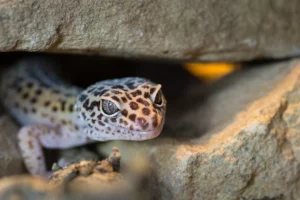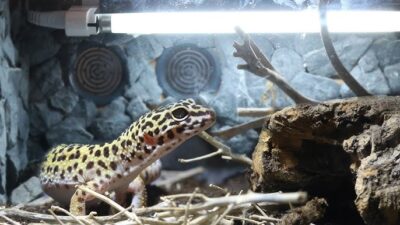When it comes to caring for your leopard gecko, providing adequate UVB lighting is crucial for their overall well-being. The question of “what watt UVB bulb for leopard gecko” often arises, highlighting the significance of understanding the specific lighting needs of these fascinating reptiles.
Finding the right wattage UVB bulb is essential to simulate their natural habitat and support essential bodily functions. Let’s explore the intricacies of selecting the ideal UVB bulb wattage to ensure your leopard gecko thrives in its environment.
Importance of UVB for Leopard Geckos

UVB light is crucial for leopard geckos’ health and well-being. In their natural habitat, these geckos bask in the sun, which provides them with UVB rays. UVB radiation helps these reptiles metabolize calcium, which is essential for proper bone growth and overall health.
Without sufficient UVB exposure, leopard geckos can develop serious health issues like metabolic bone disease (MBD). MBD results from a calcium deficiency, leading to weakened bones, deformities, lethargy, and even death in severe cases.
When kept in captivity, providing UVB lighting mimics the natural sunlight they need for their health. Special reptile UVB bulbs emit the necessary wavelengths to support calcium absorption and metabolism. Properly supplementing their environment with UVB light along with a calcium-rich diet is essential to maintain their health in captivity.
What watt uvb bulb for leopard gecko?
Choosing the correct wattage for a UVB bulb depends on the specific brand and type of bulb you’re using, as different bulbs have varying levels of UVB output. Additionally, the size and type of the enclosure play a role in determining the appropriate UVB intensity.
It’s important to refer to the manufacturer’s guidelines for the specific UVB bulb you choose. In general, for leopard geckos, a low to moderate UVB output is suitable. A 5-7% UVB bulb is often recommended for leopard geckos, and the wattage will depend on the size of the enclosure.
For a typical leopard gecko enclosure of around 10 to 20 gallons, a 13 to 26-watt UVB bulb should be sufficient. However, it’s crucial to check the manufacturer’s recommendations and consider the distance between the bulb and the basking spot in the enclosure. Too much UVB exposure can also be harmful, so it’s essential to follow guidelines closely.
Always monitor your leopard gecko’s behavior and appearance for any signs of stress or health issues, and consult with a reptile veterinarian for personalized advice based on your specific setup.


